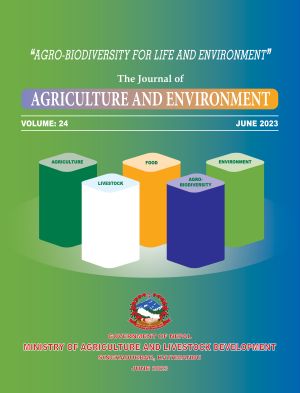Economics of Potato Production in Mustang District of Nepal
DOI:
https://doi.org/10.3126/aej.v24i01.58128Keywords:
Staple food, economics of production, potatoAbstract
Potato possesses a huge potential for production in Nepal and is a major source to ensure food and nutritional security among people of mountainous region. The study was carried out in four rural municipalities of Mustang district to assess the economics of potato production. A pre-tested semi-structured questionnaire was administered randomly to 90 different farmers. The collected data was tabulated and analysed using STATA. Potato production was identified as a profitable farming business with an average productivity of 18.95 t/ha with benefit-cost ratio of 1.59. The average per hectare total cost of production of potato was found to be Rs 660774.8 on mustang district. The study reveals that expenditure on labour wage and organic manure contributed more than three-quarters of total production cost of potato. There were no any significant differences between the different rural municipalities in terms of the total cost of production but a significant difference (1% level of significance) was observed over the production of potato per hectare. An increment in 1% cost of seeds was found to result in increase in 0.27% of income from potato production, however a diminishing return to scale (0.232) was revealed in the study. Incidence of disease and pest and price fluctuation were identified as a major constraint for potato production and marketing respectively. Timely availability of inputs, mechanization to reduce labour cost, training on advanced technology, wide coverage of agriculture extension service, and adoption of climate smart farming technologies




